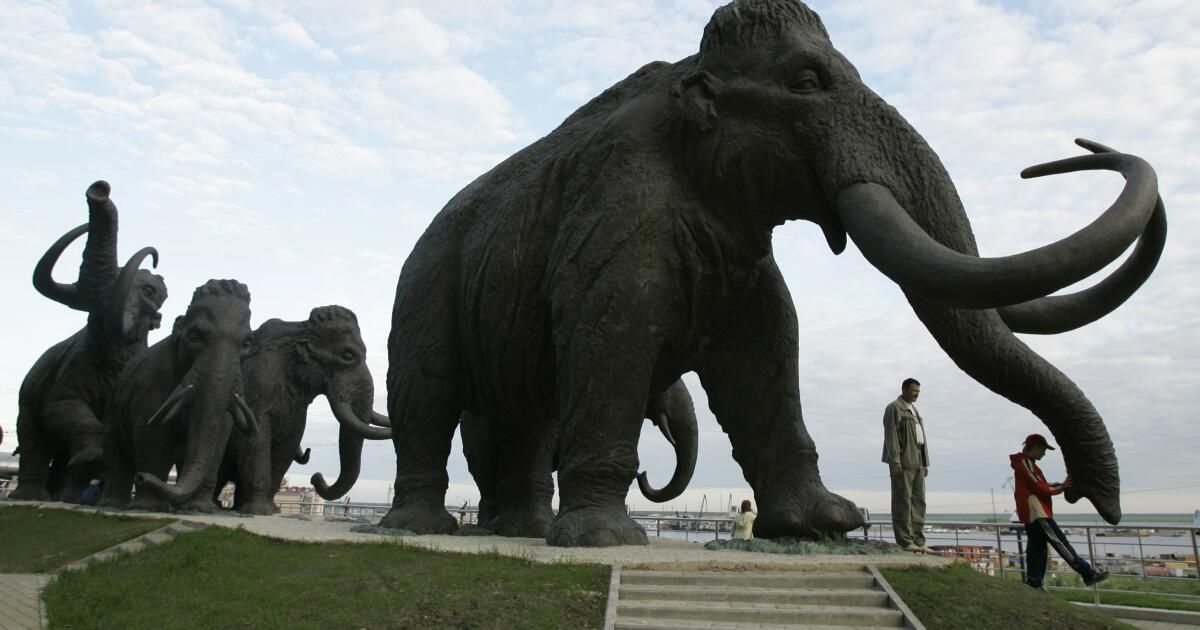As more species are pushed to the brink of extinction, conservationists are responding to our biodiversity crisis in new and sometimes controversial ways. One such novel strategy could be described as the mammoth in the room: “de-extinction” technology that has the potential to protect and restore species on the brink of extinction and, more provocatively, those that vanished from the planet long ago.
We can avoid this kind of innovation and the controversy that comes with it, but the reality is that many key moments in conservation have been controversial.
Take the case of the California condor, whose population was reduced to 22 people known In 1982, the decision to remove all of the animals from the wild for a captive breeding program sparked outrage among conservation professionals and local communities. However, today, thanks to those efforts and subsequent reintroductions of the birds into the wild, their population exceeds 500. Captive breeding programs are now regularly used to maintain and recover a variety of threatened species.
Or consider the difficult decision conservationists made in 1995 to relocate eight female cougars from Texas to infuse new genes into the population of Florida panthers, a subspecies of cougar. 30 Florida panthers remained At the time, inbreeding had made them susceptible to diseases and other health problems. Although this genetic rescue effort was highly controversial at the time, it was also highly successful, as it lessened the effects of inbreeding and allowed the population to grow steadily. Today About 200 adult panthers live in southwest Floridaand the intervention is considered a model.
The use of assisted reproductive technology Artificial insemination and in vitro fertilization techniques to boost declining species have been a more recent topic of debate in the conservation community. But since these tools were introduced, they have become standard practice in zoos to protect populations of endangered species and in captive breeding programs aimed at reintroducing species into the wild.
Our organizations, biotech company Colossal Biosciences and conservation group Re:wild, recently announced a partnership to use de-extinction technology to protect and restore species on the brink of extinction. This is a powerful collaboration between an organization with extensive experience in wildlife and ecosystem conservation and a company that uses gene-editing technology and genetic engineering to make extinction a thing of the past.
Both Re:wild and Colossal want to save species that are now going extinct. But at the heart of Colossal’s mission is the belief that the science to restore and recover species on the brink of extinction can be accelerated with ambitious projects like the recovery of the mammoth or the dodo. This focus on de-extinction, or the recovery of extinct species, is understandably a topic of intense debate.
It is no surprise, then, that our alliance has surprised some in the conservation community. Even internally, it took a great deal of thoughtful and nuanced debate – often involving passionate and sometimes seemingly insurmountable differences – to reach consensus around shared goals.
Ultimately, while Re:wild has reservations about whether the woolly mammoth and other extinct species should be returned to Earth, the organization will advise on the feasibility of such reintroductions because of the projects' potential to generate technology that could save hundreds of critically endangered species. We will work together to study the advantages, disadvantages, and feasibility of each reintroduction, working with local interests and a cross-section of the conservation community. With the Sixth major extinction event We are in the spotlight: we need all available tools to prevent extinctions and accelerate species restoration.
The conservation community has brought species back from the brink of extinction – some of which were down to just a few individuals – but each of those recoveries has been a hard-fought battle. We can recover critically endangered species much more quickly by combining Colossal’s technology with proven methods such as conservation breeding programmes, translocations of endangered species populations, assisted reproductive technology, biobanking of endangered species tissues and cells, and genetic rescue.
We are already seeing the benefits of Colossal's technology for threatened species. The tools and techniques developed for each effort to rescue a species from extinction will also benefit closely related species still alive.
The woolly mammoth project, for example, has sequenced the genomes of both the Asian and African elephants; developed induced pluripotent stem cells with the ability to differentiate into other elephant cell types; and is accelerating a cure for the deadly elephant herpes virus. Many living marsupials will also benefit from the technology Colossal is developing to bring back the thylacine, an extinct carnivorous marsupial also known as the Tasmanian tiger or Tasmanian wolf. That includes the development of artificial pouches and synthetic milk, which will allow for expanded conservation breeding programs and reintroduction efforts.
We are also using or planning to use this technology to protect and restore northern white rhinos, Sumatran rhinos, pink pigeons, Tasmanian devils, northern quolls (a small carnivorous marsupial) and many other species.
Not everyone agrees that a high-profile de-extinction of the woolly mammoth would be beneficial to our planet, but it's hard to dismiss the project's ability to create tools and technologies that could prevent the extinction of countless species.
Our partnership also allows us to access new sources of funding for conservation that would not be available without the interest generated by de-extinction. While it will always be cheaper and easier to save a species from extinction than to bring it back, we still need more resources to combat the biodiversity crisis.
Conservation is not easy and the extinction crisis has no single solution. With an estimated population of 12% of bird speciesWith 26% of mammals, 31% of sharks and rays, 36% of reef-building corals and 41% of amphibians at risk, we must consider all the tools at our disposal to secure the future of our planet and all life on it. We look forward to the day when de-extinction technology is commonly used to restore endangered species and are looking to the next great conservation challenge.
Matt James is Colossal’s Director of Animal Science. Barney Long is Re:wild’s Senior Director of Conservation Strategy.











